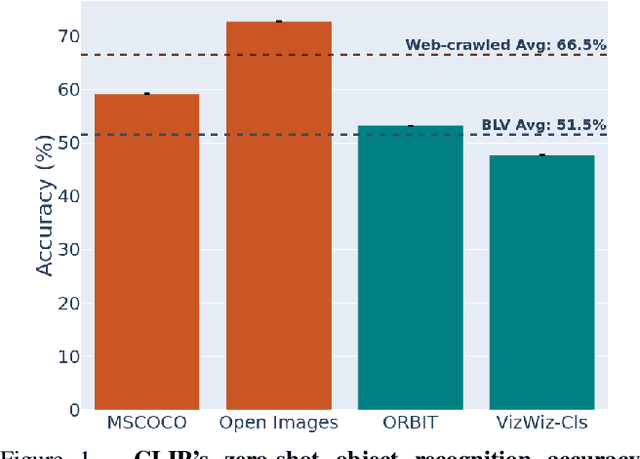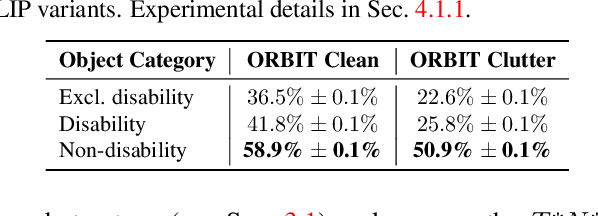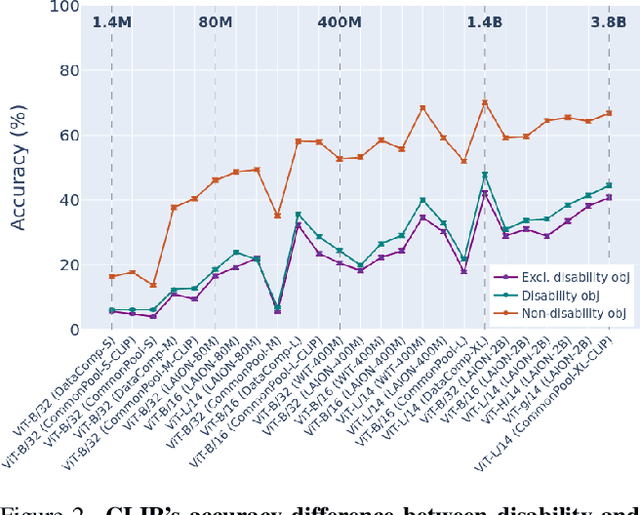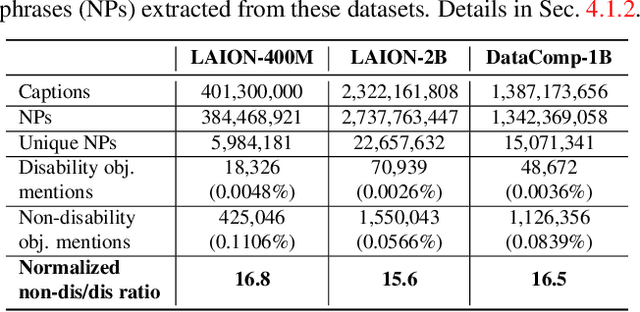Samuel Wills
Explaining CLIP's performance disparities on data from blind/low vision users
Dec 01, 2023



Abstract:Large multi-modal models (LMMs) hold the potential to usher in a new era of automated visual assistance for people who are blind or low vision (BLV). Yet, these models have not been systematically evaluated on data captured by BLV users. We address this by empirically assessing CLIP, a widely-used LMM likely to underpin many assistive technologies. Testing 25 CLIP variants in a zero-shot classification task, we find that their accuracy is 15 percentage points lower on average for images captured by BLV users than web-crawled images. This disparity stems from CLIP's sensitivities to 1) image content (e.g. not recognizing disability objects as well as other objects); 2) image quality (e.g. not being robust to lighting variation); and 3) text content (e.g. not recognizing objects described by tactile adjectives as well as visual ones). We delve deeper with a textual analysis of three common pre-training datasets: LAION-400M, LAION-2B and DataComp-1B, showing that disability content is rarely mentioned. We then provide three examples that illustrate how the performance disparities extend to three downstream models underpinned by CLIP: OWL-ViT, CLIPSeg and DALL-E2. We find that few-shot learning with as few as 5 images can mitigate CLIP's quality-of-service disparities for BLV users in some scenarios, which we discuss alongside a set of other possible mitigations.
 Add to Chrome
Add to Chrome Add to Firefox
Add to Firefox Add to Edge
Add to Edge